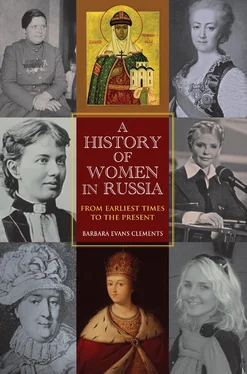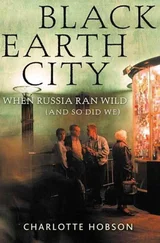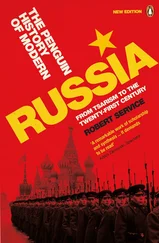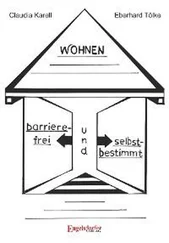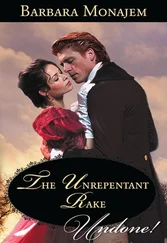Michael (ruled 1613–45) and his son Alexis (ruled 1645–76) strengthened government, modernized the military, increased trade with the rest of Europe, resumed territorial expansion, and completed the legalization of serfdom. From the late fifteenth century onward, the government had tried to limit the peasants’ right to leave the service of their landlords, in order to guarantee the nobles a stable labor force. It issued laws requiring that people pay their debts before moving away, then restricted the time of year that people could move. Still the peasants fled, sometimes to newly conquered territories, sometimes to the land of a noble who had made them a better offer than their current overlord. The government’s efforts to tie the peasants down culminated in the Ulozhenie of 1649, a law code that included provisions binding peasants to the estates on which they resided for the rest of their lives. Their descendants were to inherit this bondage. Limitations were also put on the peasants’ property rights and access to the court system. Monarchs across Eastern Europe were following the same course in the seventeenth century, decreeing serfdom at the behest of their nobilities even as the institution was fading away in Western Europe. Because the Ulozhenie ratified an enserfment that already existed de facto for most peasants, it did little to change their everyday lives. That would happen in the eighteenth century, when the landlords began to assert greater control over the people who worked their lands.
PEASANTS
Before and after the legalization of serfdom, peasant women in Muscovy lived much as their ancestors had. Girls did chores and took care of younger children. After marrying in their teens, they moved into wooden cabins with their husbands or, more often by the 1680s, into their in-laws’ homes. Extended families living together lessened the taxes, which were assessed on households. Women did the lighter gardening work, tended small livestock, prepared and preserved food, and made clothes from linen and wool they grew themselves. Younger ones did all this work while pregnant or nursing, for the babies came along regularly every few years so long as the mothers’ health held out.
The patriarchal values according to which peasant women lived were very similar to those described by the author of The Domostroi. Senior men and women in peasant families were authoritative figures, who had the lifelong right to command the junior members of their families. Wives were supposed to submit to their husbands, fathers-in-law, mothers-in-law, and other senior women and men in the village, and men were encouraged to beat wives to keep them compliant. “A wife isn’t a jug,” the peasants said. “She won’t crack if you hit her a few.” 4
Russian proverbs, some of which date back to Rus times and most of which probably originated among the peasants, also suggest that wives did not always conform to the patriarchal ideal. “It’s easier to manage a sack full of fleas than one woman,” one complained. Another observed that “the wife rules the husband not with a stick, but with a temper.” An awful fate awaited those who succumbed to wifely domination: “A crab is not a fish; a bat is not a bird; and a hen-pecked husband is not a man.”
There are enough such laments over the difficulties of controlling women to indicate that those difficulties were not uncommon. And there are also a few proverbs that comment on marriage from a woman’s point of view, thereby suggesting that women had their own opinions of husbands’ power. “A wife is not an instrument you can hang on the wall when you’re tired of playing on it,” one asserted. Another observed, slyly, “Even a foolish wife won’t tell her husband the truth.” A third commented on men’s complaints about women: “If only one evil woman lived on earth, every man would claim she was his wife.”
Peasant women did more than toil, obey, and talk back. They brightened their lives by singing lullabies to their children and telling them stories about clever boys, good girls, and wicked things that lurked in wild places. They embroidered blouses and icon cloths in the winter, when the fields were frozen. On holidays, they celebrated with feasting, drinking, songs, and dancing. Older women policed the behavior of younger ones and helped them birth their babies. All women, under the tutelage of the old ones, tended the sick and taught each other spells to attract a husband, cure diseases, foretell the future, and ward off the demons that they believed to be lying in wait to harm them. When someone died, women gathered to wash and dress the body, and then sat up all night to mark the passing. Many of the dead were children, especially when epidemics swept through the countryside. At such times women comforted one another with the reminder that their babies had gone on to a better place in heaven. Life on this earth, they believed with good reason, was all too often grueling, uncertain, even cruel.
URBAN WOMEN
Most of the women in Muscovy’s cities were poor, a condition they shared with the great majority of urban women across Europe. Muscovite townsfolk lived in wooden cottages clustered along unpaved roads; the rich sheltered in large, walled compounds. Poorer women supported themselves by making consumer goods, keeping taverns, or selling food, clothing, and housewares in boisterous markets near the city center. Some worked as servants. Theirs were precarious existences, given the ups and downs of Muscovy’s economy. Unfortunately we know very little about such women because the documents that have survived deal overwhelmingly with the elite. They contain extensive information on only one group of urban poor people, the slaves.
SLAVES
There were a lot of slaves in Muscovy; they constituted perhaps as much as 10 percent of the population, making them more numerous than nobles, merchants, or priests. 5There were also far more slaves in Muscovy than elsewhere in Europe at the time, because slavery served a very different purpose in Muscovy than it did in Western Europe. In the West, by the sixteenth century, slavery consisted overwhelmingly of the horrific bondage inflicted on Africans sent to colonies in the western hemisphere. In Muscovy, by contrast, slavery was a state into which people entered voluntarily in order to save themselves from destitution. It was akin to the English practice of indentured servitude, except that it lasted longer. In England, the indentured earned their freedom after a period of labor for their masters; in Muscovy, until the 1590s, slaves were required to remain in bondage their entire lives. Thereafter, the government changed the law so that slaves were emancipated on the death of their owners.
Muscovite slave owners shared with the English, Spanish, French, and Portuguese a preference for male slaves. Richard Hellie has calculated that two-thirds of Muscovy’s slaves were men. This was largely a matter of economics: slaves cost more in room and board than they returned in labor value. So the majority of nobles, who could afford only one slave, usually selected a man, because men did more varied work than women. Men could perform menial chores, become household and estate managers, and even serve with their masters in the army. Most of the slave owners—80–90 percent—were also men, because women’s rights to buy slaves were limited. 6
A third of Muscovy’s slaves were female, the great majority of them married women who became slaves when their husbands arranged for the entire family, including children, to enter into service. Widows and women whose husbands had deserted them also turned to slavery to save themselves from want, but they were less likely to find buyers than were single men. “The consequence…,” Hellie observes, “must have been the death from starvation and related causes of the females for whom a market did not exist.” This devaluation of female labor meant that Muscovite slavery, considered as a social-welfare institution, benefited men and married women much more than single females. 7
Читать дальше
